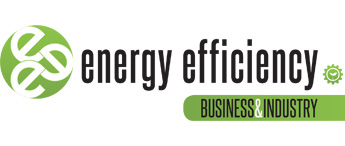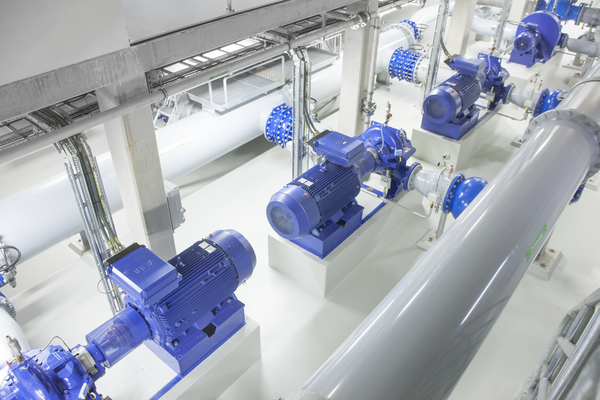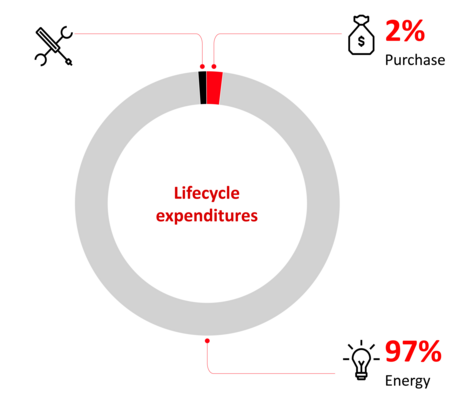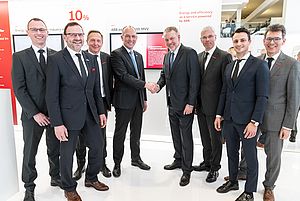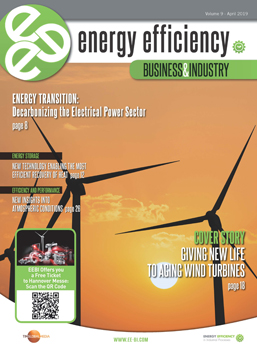As energy prices continue to rise, businesses around the world face tighter margins and a risk of closure. At the same time, regulatory requirements are becoming stricter, because Net Zero remains a priority. This is driving industry to seek ways of improving energy efficiency. Almost every industrial facility depends on electric motors, so replacing them is a significant opportunity to achieve greater efficiency.
Right now, the 300 million industrial electric motors installed globally account for over 45% of the world’s electricity usage. Many of these motors do not offer optimum energy efficiency. Upgrading older motor-driven systems to modern, high efficiency models will enable industry to greatly reduce its energy usage.
More efficient motors and drives
For an example of efficient motor technology, we can consider the synchronous reluctance motor (SynRM). This motor operates as a package solution together with a variable speed drive (VSD) to achieve IE5-class energy efficiency, the highest on the market today. SynRM motors are available in standard form factors, making them drop-in replacements in many cases.
Current EU legislation sets a minimum requirement for new industrial motors to have a rating of IE3, and IE4 will become the minimum standard for new installations in July 2023. For each increase in IE rating, the amount of energy losses decreases by 20%.
Replacing an existing IE2 motor with an IE5 ultra-premium SynRM motor, for example, reduces energy losses by up to 50%. It is important to consider the total cost of ownership (TCO), including electricity costs, rather than the upfront cost. In fact, an electric motor’s sticker price is just 2% of its lifetime cost (as illustrated in figure 1).
An Australian producer of soups, stocks and meals calculated that one plant needed to cut its energy use by 20% by 2025. To do so, they replaced existing motors with SynRM models. The plant reduced its carbon emissions by 131 tonnes that year and recorded a total cost reduction of 14%, amounting to approximately AUD$15,000.
Whereas a SynRM motor must be operated by a drive, VSDs can also be applied to existing motors to make them more efficient. A VSD controls the speed and torque of an electric motor to match its operation to the application. Because the electric motor only runs as fast as needed, significant energy savings are possible.
In most common motor applications, adding a VSD can reduce energy consumption by about 25% or more. Due to current increases in energy costs, there are some examples where the investment in SynRM motors and drives can be returned in only a few months (this is based on 2022 average European customer savings and returns in the context of rising energy costs).
Towards a circular approach
While energy efficiency is certainly important, it is not the whole picture from a climate perspective. Many companies are rightfully concerned about purchasing new equipment due to the carbon emitted during manufacturing. There are also concerns about some of the materials used in the manufacturing of motors. Environmentally focused manufacturers such as ABB are keen to address these concerns.
ABB’s SynRM technology does not feature rare earth materials, for example. We have also taken steps to ensure that motors can be properly recycled when they reach the end of their lifespan. Recycling of the motor’s aluminium, copper and iron provides an energy-saving of between 75-95% compared to producing these metals as new.
ABB has partnered with Stena Recycling to ensure that the metals in end-of-life machines are recycled properly. In particular, this ensures that the two most carbon-intensive components, the rotor and stator, are repurposed into new equipment. This approach results in significant carbon reduction across the manufacturing process and gives buyers peace of mind when replacing older motors.
Supporting the global energy revolution
SynRM and drive technology present an opportunity to vastly reduce industrial energy consumption. If these solutions are implemented worldwide, we can significantly cut global carbon emissions.
Fortunately, the technology is available on a commercial basis and represents not an additional cost but an opportunity for cost savings. In short, efficiency is better for the planet and the bottom line.
Joris Cocquyt, Global Head of Sales IEC LV Motors Division, ABB
